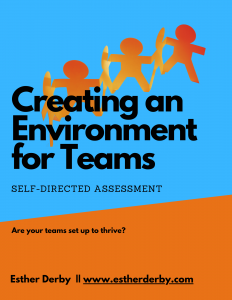A couple of weeks ago, at the Better Software Conference in San Jose, I lead an informal session on Retrospectives. I agreed to put the notes from our session up on my blog. This is a combination of the notes and my editorial comments 🙂
I use a framework for retrospectives, regardless of how long they are. My framework comes out of the ICA Focused Conversation method, which is based on empirical knowledge of how humans process information.
Start with the data (Objective level)
Then find out how people responded emotionally (Reflective level)
Step back and look at the interplay of the data and responses to figure out the significance to the group (Interpretive level)
Decide what to do (Decisional level)
The short form is: What? – Gut? – So what? – Now what?
No matter how long your retrospective is, or how much time your retrospective covers, going through each of these steps helps the group take a learning journey together.
Choose exercises based the context of the group, the duration of the project/iteration and the time dedicated to the retrospective.
In our session, we shared exercises we’ve used at each level. I’ve made some notes about adapting for an iteration retrospective at the bottom of the post.
Objective: the data about the project
How are the data structures holding up?
What were the major refactorings?
Reflective: what life was like on this project
I know, I know: some people aren’t comfortable talking about emotions ( I very seldom use the “F” word –Feelings— when I do retrospectives). And it’s critical to surface emotional responses – this is where we learn what was important to people. Reflective data tell me where people’s energy is and where there’s likely to be some juice for learning.
Interpretive: what do we make of the data so far. Insights and meaning to the group
This is where most people start post project reviews. My experience is that you get much deeper insights – and more group support for those insights – when you start with the data and emotional responses.
Some questions to ask at this level are:
What did we do well that we want to continue?
What would we do differently (knowing what we know now)?
What did we learn?
What still puzzles us?
This was the best project because … (list the reasons).
This was the worst project because … (list the reasons).
What would we do exactly the same?
What would we stop doing?
What was really good?
What are suggestions for improvement?
Decisional: taking insights into action
For a retrospective covering a longer period of time consider these strategies:
For iteration retrospectives after an iteration of 1 week to 30 days try exercises that
combine Objective and Reflective levels:
How well we are doing on core practices and
How well we’d like to do next iteration
Interpretive
What could we do smarter next time?
What was really good?
What are suggestions for improvement?
Decisional
What would we do exactly the same?
What would we stop doing?
Further resources:
Project Retrospectives: A Handbook for Team Reviews. Norm Kerth
Facilitators Guide to Participatory Decision Making. Sam Kaner et al.
The Art of Focused Conversation. Brian Stanchfield, ed.
Requirements by Collaboration. Ellen Gottesdiener
Singing the Songs of Project Retrospectives in Cutter IT Journal (mining patterns in retros). Linda Rising and Esther Derby
Note There’s something funny going on with blogger, most of the tool bars are missing. I’ll add links and pictures (fingers crossed) later. And spell check.


